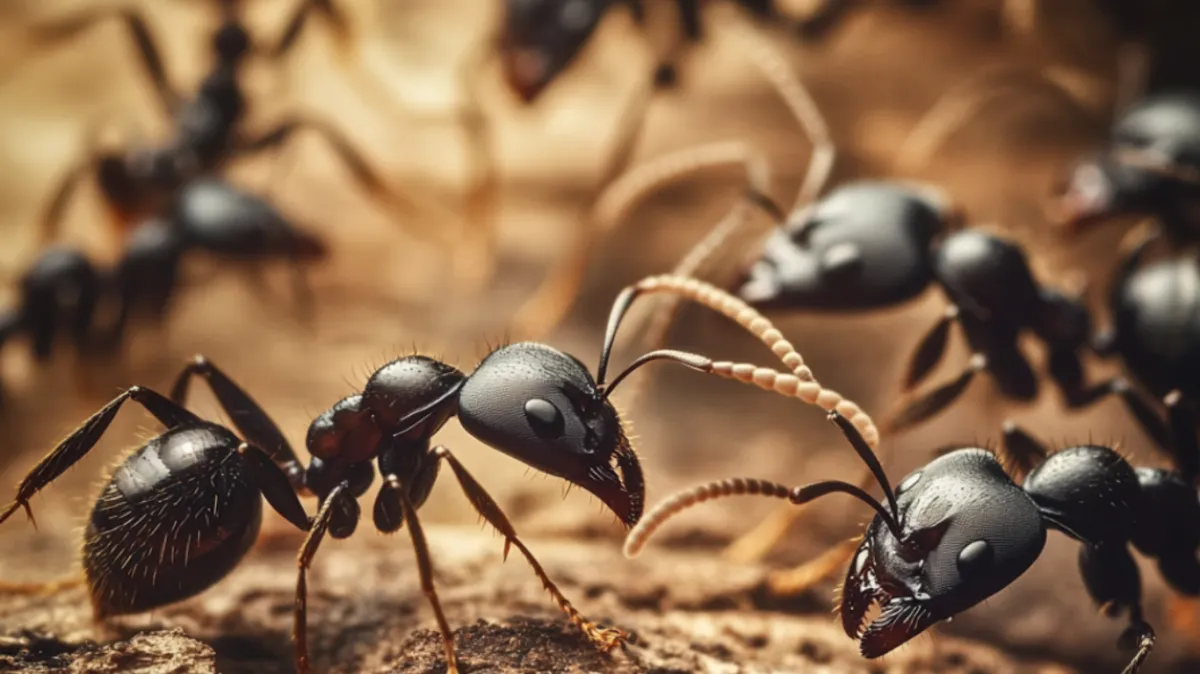
The Ottawa Pest Control Journal
Educational insights into how to keep your Ottawa home or business pest free

Back-to-School Pest Checklist: Keeping Your Home Protected
Routine Inspections: Essential Steps for Maintaining a Pest-Free Home
Conducting routine inspections is a cornerstone of effective pest management, especially as seasons and routines change. Focusing on potential entry points and common areas can significantly reduce the risk of pest invasions. Here's a detailed breakdown of what to include in your routine inspections:
1. Inspection of Entry Points:
Windows and Doors: Check seals around windows and doors for any gaps or tears in weather stripping. Replace or repair any damaged seals to block entry points for pests.
Foundation Checks: Regularly inspect the foundation for cracks or crevices. Use appropriate sealants to close these gaps, preventing pests such as ants, spiders, and rodents from entering.
Utility Entries: Examine points where utilities (pipes, wires) enter your home. Seal gaps with steel wool or caulking to deter pests from using these pathways.
2. Attention to Common Areas:
Kitchen Vigilance: The kitchen is particularly vulnerable to pests. Regularly check under sinks, appliances, and cabinets for signs of pests. Ensure that all food is stored in airtight containers and that countertops and floors are clean of food debris.
Garbage Management: Ensure that indoor and outdoor garbage bins are sealed and emptied regularly. Accumulated trash can attract a wide range of pests.
Pet Food Storage: Store pet food in sealed containers and avoid leaving pet food out overnight. Freely accessible pet food can attract rodents and insects.
3. Periodic Deep Clean:
Under Furniture: Periodically move and clean under furniture, appliances, and other large items. Pests often hide in these undisturbed areas.
Textiles and Upholstery: Clean curtains, upholstery, and other fabrics that might harbor pests like fleas, especially if you have pets.
4. Monitoring Moisture Levels:
Check for Leaks: Inspect for leaking pipes and faucets, both inside and outside your home. Moist environments are breeding grounds for many pests.
Dehumidify: Use dehumidifiers in damp areas of the home like basements and crawl spaces to discourage pest habitation.
5. Seasonal Adjustments:
Weather-Related Preparations: Adapt your inspection routines to the seasons. For example, increase checks during wet seasons when the likelihood of pests entering for shelter and dry conditions increases.
Minimize Clutter: Key Strategies to Prevent Pest Infestations
Maintaining a clutter-free home is crucial in preventing pests from finding shelter and breeding grounds. Especially during the back-to-school season, when the hustle of school supplies and more indoor activities can lead to clutter accumulation, it's important to implement effective organization and cleaning strategies. Here’s how you can minimize clutter to keep pests at bay:
1. Organize and Store Properly:
School Supplies: Encourage children to store their school supplies in designated drawers or bins rather than leaving items scattered on the floor. Use containers with lids to prevent pests from accessing materials.
Toys and Books: Regularly organize toys, books, and other recreational items into proper shelves or toy boxes. Open storage can invite pests to hide and breed.
2. Regular Cleaning Routines:
Daily Tidying: Implement a daily tidying routine where children help put away their items after homework or playtime. This reduces clutter and minimizes pest hiding spots.
Weekly Cleaning Sessions: Set aside time each week for a more thorough cleaning of playrooms, bedrooms, and study areas. This should include vacuuming, dusting, and wiping down surfaces to eliminate crumbs and spills that attract pests.
3. Designated Eating Areas:
Limit Food Consumption: Restrict eating to the kitchen or dining area to prevent food crumbs from accumulating in study areas or bedrooms, which can attract ants, roaches, and rodents.
Clean Up Immediately After Meals: Ensure that any food spills or debris are cleaned up promptly. This practice not only maintains hygiene but also reduces food sources for pests.
Addressing Moisture Issues: Essential Steps for a Pest-Free Environment
Moisture control is pivotal in pest prevention, as many pests thrive in damp conditions. Addressing and rectifying moisture issues within your home can drastically reduce the likelihood of infestations by pests such as cockroaches, silverfish, and termites. Here are detailed strategies to effectively manage moisture in your home:
1. Comprehensive Leak Repairs:
Identify and Fix Leaks: Regularly inspect all plumbing areas, including under sinks, around toilets, and near appliances like dishwashers and refrigerators. Promptly repair any signs of leakage to prevent moisture accumulation.
Inspect Roof and Attic: Check for roof leaks, especially after heavy rainfall. Water from roof leaks can seep into insulation and wooden structures, creating ideal conditions for pests.
2. Enhancing Home Ventilation:
Bathroom and Kitchen Fans: Utilize exhaust fans in bathrooms and kitchens to expel humid air directly outside, rather than into the attic or between walls.
Proper Air Circulation: Open windows when weather permits to allow fresh air circulation, reducing indoor humidity levels. This is especially important in areas prone to dampness like laundry rooms and basements.
Use of Dehumidifiers: In particularly humid areas of the home, such as basements and crawl spaces, use dehumidifiers to maintain a dryer environment.
3. Proper Drainage Solutions:
Gutters and Downspouts: Ensure that gutters and downspouts are clean and properly directing water away from your home’s foundation. Consider installing gutter guards to prevent blockages.
Slope Correction: Adjust landscaping and outdoor grading to encourage water to flow away from your home, preventing water pooling that attracts pests.
By taking proactive steps to manage pest risks, you can ensure that your home remains a healthy and enjoyable space for your family. For more detailed guidance and professional pest control solutions, visit our website. Wayne’s Pest Extermination is here to help you enjoy a pest-free school year!

Schedule a Pest Inspection
Ready to schedule a pest inspection? Contact us today.
